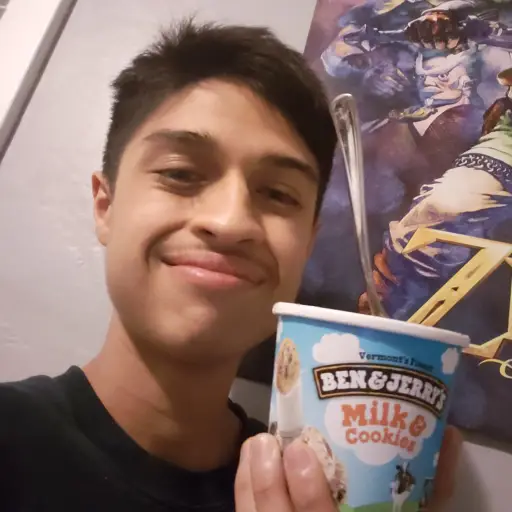After a three year wait, Jesse Eisenberg’s directorial debut, “When You Finish Saving the World,” was finally released in theaters and on demand in January of 2023. The film is based on Eisenberg’s Audible original audiobook of the same name, which was published in August of 2020. The audiobook also won the Audio Award for “Original Work” in 2021. The film adaptation was announced four months before the audiobook’s release date, with Finn Wolfhard slated to reprise his role and Julianne Moore attached to the project. Additionally, Eisenberg’s longtime co-star Emma Stone and comedian Dave McCary both produced the film with their production company, Fruit Tree. “When You Finish Saving the World” premiered at the Sundance Film Festival in January 2022. It received mixed to positive reviews from critics and audiences, scoring a 63% on Rotten Tomatoes and a 2.9 average rating on Letterboxd. Despite the flaws in the film’s screenplay, Eisenberg’s camerawork brilliantly captures the relationship between the movie’s characters, making it worth watching.
The film focuses on 17-year-old high school student Ziggy Katz (Wolfhard), who makes and performs original songs while live streaming to international viewers. Meanwhile, his mother Evelyn Katz (Moore) helps run a shelter for women who experienced domestic abuse. Ziggy and Evelyn have a difficult time connecting, as they aren’t interested in learning about the other’s daily activities. They both decided to share their interests with other people. Ziggy shares his musical talent with his love interest and classmate, Lila (Alisha Boe). Meanwhile, Evelyn spends time with 17-year-old Kyle (Billy Bryk), who stays with his mother at the shelter. She does mundane activities with him that her son has no interest in, such as grocery shopping, enjoying opera music, eating at restaurants and applying for colleges. Ziggy and Evelyn are so focused on their dysfunctional relationship that they forget about the existence of Roger, the father, in their family. Eisenberg perfectly visualizes this family’s flawed dynamic.
Eisenberg’s Directing
Most directors don’t begin their careers as actors; Eisenberg is the exception to that rule. It’s clear that an actor directed this film, as it relies on the actors’ performances to humanize their deeply flawed characters. Eisenberg uses zoom-in shots to showcase these performances. One scene that reflects this approach is when Evelyn considers the bond between Kyle and his mother. The scene begins with Evelyn talking to Kyle and his mother, then cuts to a wide shot of Evelyn standing in her bathroom. As she takes deep breaths and sips from a cup of coffee, the camera slowly zooms in to a closeup of Evelyn’s face. This camerawork allows Moore to show off her acting skills and convey Evelyn’s desire to spend more time with her son. Additionally, it makes Evelyn a more sympathetic character. Throughout the film Eisenberg uses various camera angles to depict how the characters form a relationship with one another. He uses a combination of wide, over-the-shoulder, and two-person shots to demonstrate the evolving bond between Ziggy and Evelyn.
Eisenberg crafts these shots based around the movie’s production design. This is demonstrated at the beginning of the film, when the Katz family eats at their dinner table while discussing Ziggy’s music career. Before the conversation starts, Eisenberg uses a wide shot to establish the scene. In the frame, Evelyn sits on the left side of the table, while Ziggy sits on the right. Roger sits in the middle of the table, in the center frame. This wide shot enhances the film’s focus on the relationship between Ziggy and Evelyn. In this frame, they both sit on opposite sides of the table. They stare down at their plates, not looking at each other. If they looked up they would make direct eye contact. Roger is an outsider to their relationship, which is represented by how he is physically removed from the direct connection between Ziggy and Evelyn.
The Half-Baked Adapted Screenplay
Despite Eisenberg’s brilliant directing, there’s room for him to improve his writing, particularly when adapting his own source material. There’s a huge difference between the film and the audiobook. The audiobook focuses on each member of the Katz family over 30 years. The story begins with a young father, Nathan (Eisenberg), who struggles to connect with newborn Ziggy. For the film, Eisenberg switched the gender of the role, to center on a mother rather than a father. The audiobook explores 15-year-old Ziggy’s perspective as he learns more about his background and identity. In contrast, the film only centers on the music Ziggy makes and performs to other people. Both audiobook and film center on the matriarch of the household, who is named Rachel in the audiobook and Evelyn in the movie. However, the film doesn’t explore her college years like the audiobook does. This is the only segment that Eisenberg didn’t include in the film.
Overall, the film only contains altered parts of the original story. For instance, the film takes place solely in the present day, where the family is formed and Ziggy is grown up. This directorial decision undercuts the audience’s connection with these characters. Eisenberg should have adapted the material into a television series rather than a film because it has so many important storylines that were unable to be covered. Exploring Rachel’s/Evelyn’s life more thoroughly would have expanded the family’s complicated dynamic and introduced more themes, such as generational trauma. Because “When You Finish Saving the World” doesn’t include these segments, it feels less like its source material and more like its own story. As a result, audiences that are unaware of audiobook will likely enjoy the film because it is a short and moving story. However, fans of the audiobook will probably be disappointed and underwhelmed due to the film not fully covering the original story. While “When You Finish Saving the World ” is a misfire for fans of the audiobook, it is a hidden gem for those who are interested in discovering Eisenberg’s directing talent.












